About 40 years on, so-called “free jazz” and “free music” from the late 60s, 70s and early 80s doesn’t sound so revolutionary any more. The idea of improvising without chord structures or fixed rhythm has gradually seeped into most players’ consciousness, with the genre(s) now accepted as particular methods for improvisation along with bop, Dixieland and fusion. Historical perspective also means that many sessions originally recorded during that period are now being released. Some are reissues, usually with additional music added; others are newly unearthed tapes being issued for the first time. The best discs offer formerly experimental sounds whose outstanding musicianship is more of a lure than nostalgia.
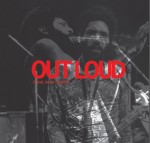
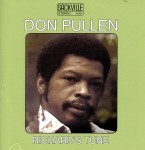 Mixing joyfulness with jagged edges also characterized the playing of pianist Don Pullen (1941-1995), who in 1975 recorded Richard’s Tune (Delmark/Sackville CD2-3008 delmark.com),his first-ever solo release, in Toronto due to the suggestion of producer Bill Smith of CODA. Known for his stint in bassist Charles Mingus’ band, Virginia-born Pullen was a keyboard anomaly. Fully conversant with the clashing dynamics of the so-called “new thing,” his grounding in blues and gospel music gave even his most advanced compositions a lilting rhythm. Case in point is Big Alice, heard in two versions – the second of which is one of the CD’s two previously unreleased tracks. Almost danceable and certainly funky, the versions demonstrate the propulsion that can arise from a single keyboard. While the original mates bravura glissandi with thrusting theme variations, the alternate encompasses a harder touch that emphasizes the blues base without weakening the distinctive theme. Kadji, the other discovery, demonstrates Pullen’s mastery of pacing as he cascades a skipping childlike theme. The kinetic Song Played Backwards spills out a multitude of notes in a headlong rush, while maintaining a directed flow. Overall, the more than 15-minute Suite (Sweet Malcolm) is a major statement that demonstrates Pullen’s duality. Slithery splatters and moderato pacing bring in inferences from gospel, stride, blues and work songs, while later sharp and percussive timbres inhabit the area between Cecil Taylor-like percussiveness and Thelonious Monk-like angular diffidence.
Mixing joyfulness with jagged edges also characterized the playing of pianist Don Pullen (1941-1995), who in 1975 recorded Richard’s Tune (Delmark/Sackville CD2-3008 delmark.com),his first-ever solo release, in Toronto due to the suggestion of producer Bill Smith of CODA. Known for his stint in bassist Charles Mingus’ band, Virginia-born Pullen was a keyboard anomaly. Fully conversant with the clashing dynamics of the so-called “new thing,” his grounding in blues and gospel music gave even his most advanced compositions a lilting rhythm. Case in point is Big Alice, heard in two versions – the second of which is one of the CD’s two previously unreleased tracks. Almost danceable and certainly funky, the versions demonstrate the propulsion that can arise from a single keyboard. While the original mates bravura glissandi with thrusting theme variations, the alternate encompasses a harder touch that emphasizes the blues base without weakening the distinctive theme. Kadji, the other discovery, demonstrates Pullen’s mastery of pacing as he cascades a skipping childlike theme. The kinetic Song Played Backwards spills out a multitude of notes in a headlong rush, while maintaining a directed flow. Overall, the more than 15-minute Suite (Sweet Malcolm) is a major statement that demonstrates Pullen’s duality. Slithery splatters and moderato pacing bring in inferences from gospel, stride, blues and work songs, while later sharp and percussive timbres inhabit the area between Cecil Taylor-like percussiveness and Thelonious Monk-like angular diffidence.
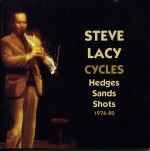 Free Music was appreciated in many non-American places besides Toronto. In fact the 20 selections on the two-CD set Cycles (1976-80)[Emanem 5205 emanemdisc.com] were recorded in Paris, Rome, Cologne and Switzerland. Someone who created a place for the soprano saxophone in advanced jazz, Steve Lacy (1932-2004), was a master at finding new playing situations and a pioneer of solo saxophone concerts. Some of the five-part Hedges cycle for instance was recorded in concert with a dancer, and on the happy-go-lucky Rabbit the sounds of the dancer’s footfalls are audible. Otherwise the tracks are aurally descriptive, with Fox including the replication of a hunting-horn before turning to altissimo animal cries and growls and Squirrel using reed kisses to approximate animal squeaks and scurries. Others like The Ladder are self-explanatory as Lacy chromatically ascends the scale in a series of peeps, whistles and overtones. However while the logic behind using timbre-dissecting tight aviary tones to salute Albert Ayler on The Wire may be evident, the cantering sweeps that turn from a spindly line to circular breathing to a sweet melody on Tots that honours Claude Debussy may confuse some. The underlying point, as demonstrated on Wickets where Lacy appears to be vacuuming up sound from every crevice of his horn, is that the soprano saxophonist used every type of music to forge his playing.
Free Music was appreciated in many non-American places besides Toronto. In fact the 20 selections on the two-CD set Cycles (1976-80)[Emanem 5205 emanemdisc.com] were recorded in Paris, Rome, Cologne and Switzerland. Someone who created a place for the soprano saxophone in advanced jazz, Steve Lacy (1932-2004), was a master at finding new playing situations and a pioneer of solo saxophone concerts. Some of the five-part Hedges cycle for instance was recorded in concert with a dancer, and on the happy-go-lucky Rabbit the sounds of the dancer’s footfalls are audible. Otherwise the tracks are aurally descriptive, with Fox including the replication of a hunting-horn before turning to altissimo animal cries and growls and Squirrel using reed kisses to approximate animal squeaks and scurries. Others like The Ladder are self-explanatory as Lacy chromatically ascends the scale in a series of peeps, whistles and overtones. However while the logic behind using timbre-dissecting tight aviary tones to salute Albert Ayler on The Wire may be evident, the cantering sweeps that turn from a spindly line to circular breathing to a sweet melody on Tots that honours Claude Debussy may confuse some. The underlying point, as demonstrated on Wickets where Lacy appears to be vacuuming up sound from every crevice of his horn, is that the soprano saxophonist used every type of music to forge his playing.
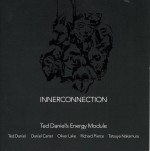 Not everyone had given up on New York however. Trumpeter Ted Daniel’s Energy Modules recorded Innerconnection (NoBusiness Records NBCD 72/73 nobusinessrecords.com) there in 1975. With 40 years of hindsight it’s apparent that Daniels’ quintet was not only creating its own variation of Energy Music, but was so comfortable with the idiom that it was almost a repertory band. Considering that the compositions in the repertory were by Sunny Murray, Dewey Redman, Albert Ayler and Ornette Coleman, there’s little chance Wynton Marsalis will ever follow suit. Daniel crafted sophisticated arrangements so the originals fit seamlessly with the other tunes. For instance Murray’s sing-song Jiblet serves as an appropriate introduction to Redman’s Innerconnection, which is given such a furious workout by Daniel Carter’s nephritic sounding tenor sax work and drummer Tatsuya Nakamura’s vigorous slapping that the track could define energy music. While the other horns honk and cry, the trumpeter’s tone is smoother and graceful. That’s most obvious when his mellow composition Pagan Spain is performed with muted grace notes joining a reading of Coleman’s Congeniality. Cunningly Congeniality is the concluding theme following an introduction of thickened stops from bassist Richard Pierce plus Nakamura’s splatters. Unbridled buoyancy is maintained, while in the background Oliver Lake creates a seething call and response, alternating between cowbell and piccolo. The true magnum opus on the two-CD set however is Ghosts. Turing Ayler’s march-tempo dirge into an extended collective improvisation, the band emphasizes the tune’s gospel roots. Swelling in tandem, Carter’s squeaking melisma becomes the preacher as the other instruments’ sway congregation-like around his literal speaking-in-tongues solo. Crucially though, the trumpeter’s erudition is such that though the tune coarsens, space remains for his controlled comments.
Not everyone had given up on New York however. Trumpeter Ted Daniel’s Energy Modules recorded Innerconnection (NoBusiness Records NBCD 72/73 nobusinessrecords.com) there in 1975. With 40 years of hindsight it’s apparent that Daniels’ quintet was not only creating its own variation of Energy Music, but was so comfortable with the idiom that it was almost a repertory band. Considering that the compositions in the repertory were by Sunny Murray, Dewey Redman, Albert Ayler and Ornette Coleman, there’s little chance Wynton Marsalis will ever follow suit. Daniel crafted sophisticated arrangements so the originals fit seamlessly with the other tunes. For instance Murray’s sing-song Jiblet serves as an appropriate introduction to Redman’s Innerconnection, which is given such a furious workout by Daniel Carter’s nephritic sounding tenor sax work and drummer Tatsuya Nakamura’s vigorous slapping that the track could define energy music. While the other horns honk and cry, the trumpeter’s tone is smoother and graceful. That’s most obvious when his mellow composition Pagan Spain is performed with muted grace notes joining a reading of Coleman’s Congeniality. Cunningly Congeniality is the concluding theme following an introduction of thickened stops from bassist Richard Pierce plus Nakamura’s splatters. Unbridled buoyancy is maintained, while in the background Oliver Lake creates a seething call and response, alternating between cowbell and piccolo. The true magnum opus on the two-CD set however is Ghosts. Turing Ayler’s march-tempo dirge into an extended collective improvisation, the band emphasizes the tune’s gospel roots. Swelling in tandem, Carter’s squeaking melisma becomes the preacher as the other instruments’ sway congregation-like around his literal speaking-in-tongues solo. Crucially though, the trumpeter’s erudition is such that though the tune coarsens, space remains for his controlled comments.
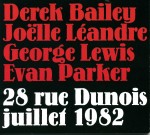 European players had almost become avant-garde masters by this time – but with a distinctive non-Yank style. Case in point is 28 rue Dunois juillet 1982 (Fou Records FR-CD 06 fou.records.free.fr), two extended never-before-released performances by American trombonist George Lewis, guitarist Derek Bailey and saxophonist Evan Parker from the United Kingdom, and French bassist Joëlle Léandre. Like Lacy, each developed a matchless playing method that’s apparent from the first tones: Bailey outputting irregular string clanks, Parker circular breathing and Léandre warbling as she bows. To appreciate Dunois 1982’s 78 minutes of music imagine it’s an aural feature film with close-up inserts. Volcanic crescendos and whispering minimalist textures arise from the polyphony created when the slurs, smacks and scrubs brush up against one another. But also focus on each of the players, noting how individualistic patterns stay consistent as they improvise in a parallel fashion. For instance on 1ère partie/1b what would be out-of-tune licks from another guitarist are used by Bailey to angle into a duet between Parker and Lewis, where the reedist’s tones slide upwards as the trombonist blows downwards. Eventually Léandre’s taunt extrusions push the others into a mini climax of ferocious percussiveness surmounted by Lewis’ buttery tone. Almost immediately though, each player sabotages the near swing with distinctive tone substitutions leading to the improvisation creatively dissipating. By the extended 2éme partie/1 the contrapuntal improvising becomes as stimulating as a Dixieland jam, but framed more sophisticatedly. While the bassist often sardonically mocks the others by injecting high-European classical phrases, Lewis’ lowing blurts are close cousins to tailgate slurs and Bailey could be abrasively pounding banjo strings. Only Parker’s staccato tongue-shattering tones resist the comparison, but when he triggers a cascade of notes, contemporary skills and imagination are confirmed. Raucous excitement is there, but in a more minimalist fashion than in earlier music.
European players had almost become avant-garde masters by this time – but with a distinctive non-Yank style. Case in point is 28 rue Dunois juillet 1982 (Fou Records FR-CD 06 fou.records.free.fr), two extended never-before-released performances by American trombonist George Lewis, guitarist Derek Bailey and saxophonist Evan Parker from the United Kingdom, and French bassist Joëlle Léandre. Like Lacy, each developed a matchless playing method that’s apparent from the first tones: Bailey outputting irregular string clanks, Parker circular breathing and Léandre warbling as she bows. To appreciate Dunois 1982’s 78 minutes of music imagine it’s an aural feature film with close-up inserts. Volcanic crescendos and whispering minimalist textures arise from the polyphony created when the slurs, smacks and scrubs brush up against one another. But also focus on each of the players, noting how individualistic patterns stay consistent as they improvise in a parallel fashion. For instance on 1ère partie/1b what would be out-of-tune licks from another guitarist are used by Bailey to angle into a duet between Parker and Lewis, where the reedist’s tones slide upwards as the trombonist blows downwards. Eventually Léandre’s taunt extrusions push the others into a mini climax of ferocious percussiveness surmounted by Lewis’ buttery tone. Almost immediately though, each player sabotages the near swing with distinctive tone substitutions leading to the improvisation creatively dissipating. By the extended 2éme partie/1 the contrapuntal improvising becomes as stimulating as a Dixieland jam, but framed more sophisticatedly. While the bassist often sardonically mocks the others by injecting high-European classical phrases, Lewis’ lowing blurts are close cousins to tailgate slurs and Bailey could be abrasively pounding banjo strings. Only Parker’s staccato tongue-shattering tones resist the comparison, but when he triggers a cascade of notes, contemporary skills and imagination are confirmed. Raucous excitement is there, but in a more minimalist fashion than in earlier music.
Many listeners may have missed out on the flowering of free music first time out. With these releases, they have a chance to catch up in an organized fashion.



